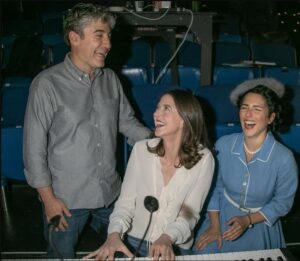Rosalind Franklin’s Role in DNA Discovery, Once Ignored, Is Told Anew in Song
Originally published in the New York Times by Lauren Rosenfield
During the summer of 2020, the composer and lyricist Madeline Myers spent hours at the piano in her Manhattan apartment as she struggled to write three songs for her new musical, “Double Helix,” about the British chemist Rosalind Franklin. The challenge wasn’t strictly about marrying words to a score, but conveying the science of a crucial moment in the discovery of DNA’s structure — and making the songs entertaining.
Franklin’s experiments, in which she successfully used X-ray crystallography to create images of DNA, became the basis for James Watson and Francis Crick’s groundbreaking 1953 discovery of the double helix structure. The breakthrough underpins our modern understanding of genetics and biology, but for years Franklin received none of the credit. (She died of cancer in 1958 at the age of 37; her male colleagues were later awarded the Nobel Prize.)
Fast forward to a recent afternoon, when Myers and the show’s director, Scott Schwartz, were in a rehearsal room high above 42nd Street facing a new hurdle: how to stage those science-focused songs, including one number fittingly called “The Problem.” In this scene, six actors are in a lab using an X-ray crystallography machine to try to capture an image of DNA. As they turned their focus from a makeshift cardboard contraption to a screen positioned upstage, Schwartz called out: “We’re suspending reality in making the photograph immediately show up on the projection screen.”
